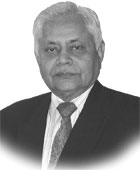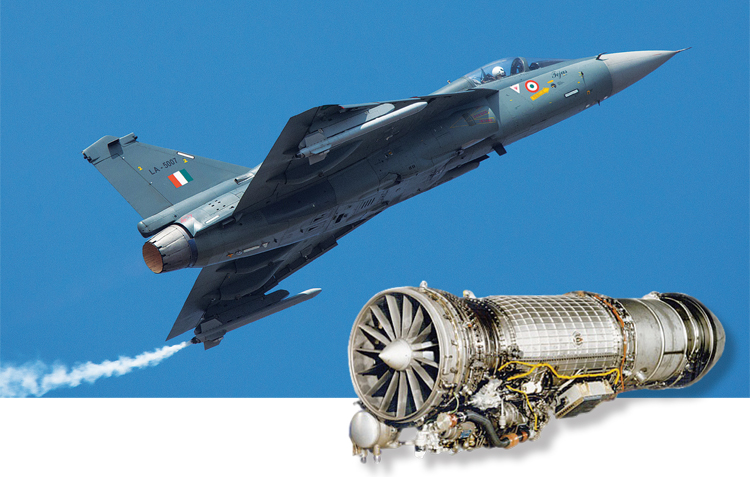INDIAN ARMED FORCES CHIEFS ON OUR RELENTLESS AND FOCUSED PUBLISHING EFFORTS

The insightful articles, inspiring narrations and analytical perspectives presented by the Editorial Team, establish an alluring connect with the reader. My compliments and best wishes to SP Guide Publications.

"Over the past 60 years, the growth of SP Guide Publications has mirrored the rising stature of Indian Navy. Its well-researched and informative magazines on Defence and Aerospace sector have served to shape an educated opinion of our military personnel, policy makers and the public alike. I wish SP's Publication team continued success, fair winds and following seas in all future endeavour!"

Since, its inception in 1964, SP Guide Publications has consistently demonstrated commitment to high-quality journalism in the aerospace and defence sectors, earning a well-deserved reputation as Asia's largest media house in this domain. I wish SP Guide Publications continued success in its pursuit of excellence.
Powering the LCA Tejas MK 1A
The deal for 100 GE F404 engines would help further strengthen ties between India and the US especially after the latter has declared India to be its major defence partner
 | The Author is Former Air Officer Commanding-in-Chief of Training Command, IAF |

PROCUREMENT OF GE F404 ENGINES FROM THE US
At the end of the second week of July this year, the Indian media carried the news that the nation was close to signing a deal with the United States (US) valued at $700 million for the purchase of 100 General Electric F404 (GE F404) engines to power the Light Combat Aircraft (LCA) Tejas Mk 1A fighter jets that have been designed and developed by the Indian aerospace industry. The LCA Tejas Mk 1A is a single-engine, 4.5 generation, single seat, multirole fighter aircraft that is currently being manufactured in the country by Hindustan Aeronautics Limited (HAL), the Indian aerospace major in the public sector. The engine maker General Electric Company on the other hand, is a multinational conglomerate in the US. The GE F404 engine was selected by the Indian aerospace industry to power the LCA Tejas Mk 1 as efforts by the Gas Turbine Research Establishment (GTRE) under the Defence Research and Development Organisation (DRDO) in India to develop the Kaveri engine for this platform, had run aground. The Kaveri engine was planned to be a low bypass, twin-spool, turbofan jet engine with the capability to provide 80 kN of thrust and adequate thrust-to-weight ratio required for a modern fighter jet.
As per reports, negotiations between India and the US for the supply of 100 GE F404 engines have nearly been completed and all related issues are believed to have been sorted out. The contract with GE for the procurement of 100 GE F404 engines is likely to be signed this year and as and when this happens, it will be largest deal with the US in the domain of the defence industry since the purchase in February last year of 24 Sikorsky MH-60R Seahawk helicopters for the Indian Navy and six Boeing AH-64E Apache attack helicopters for the Indian Army. The most recent deal for 100 GE F404 engines would help further strengthen ties between India and the US especially after the latter has declared India to be its major defence partner. This apparently has been done to counter the escalating threat from China.
DEVELOPMENT OF THE LCA TEJAS MK 1A
The first supersonic combat jet produced by the Indian aerospace industry commencing in the late 1950s, was the Hindustan Fighter 24 (HF-24) Marut. The fleet of HF-24 Marut aircraft was retired from service in the late 1970s. The decision by the government related to indigenous design and development of a new combat platform for the Indian Air Force (IAF) to replace the ageing fleet of MiG-21 fighter jets, was taken in 1983. For the development of this new combat platform which was called the LCA and was later renamed as “Tejas”, a dedicated organisation named as the Aeronautical Development Agency (ADA) was created and placed under the Defence Research and Development Organisation (DRDO). Initially ADA was manned by around 250 engineers that were transferred from HAL to ADA to undertake this task. While ADA was made responsible for the design of the platform, the task of production of the LCA Tejas was assigned to HAL.
As the IAF was desirous of a more capable platform, the order for the LCA Tejas Mk 1 was restricted to 40 aircraft to equip just two squadrons
The first aircraft designated as the LCA Tejas Mk 1, was formally handed over to the IAF in 2015, more than three decades after the project was sanctioned. As the performance of the LCA Tejas Mk 1 failed to meet with the expectations and requirements, the IAF suggested 43 improvements on the LCA Tejas Mk 1 most of which were pertaining avionics and weapon systems. Amongst the improvements suggested, some of the major ones included upgrade to Active Electronically Scanned Array (AESA) Radar, installation of Self Protection Jammer, Software Defined Radio (SDR), enhancement of Software capability and Computing Power, incorporation of Radar Warning Receiver (RWR), integration of Advanced Short Range Air-to-Air Missile (ASRAAM) weapon system for close combat role procured from European missile maker MBDA and capability of in-flight refuelling and improved maintainability. As the IAF was desirous of a more capable platform, the order for the LCA Tejas Mk 1 was restricted to just 40 aircraft to equip two squadrons. One squadron of the LCA Tejas Mk 1 is already operational and the second squadron is in the process of being equipped with this platform and should be available for flight line operations in the near future.
POWER PLANT FOR THE LCA TEJAS MK 1A
The LCA Tejas Mk 1 is powered by the GE F404 engine that belongs to a family of afterburning turbofan engines in the static thrust of 10,500 to 19,000 pounds (47 to 85 kN) class. To significantly enhance the performance of the platform, the IAF would have liked the LCA Tejas Mk 1A to be equipped with the more powerful GE F414 engine that is capable of producing a thrust of 22,000 pounds (98 kN). Unfortunately, there were some impediments in the way that made this aspiration of the IAF somewhat impractical and not possible to implement. As the GE F414 engine is larger, has a diameter which is larger than that of the GE F404 engine and is of higher weight, it would require substantial redesign of the fuselage if the GE F404 engine is to be replaced by the GE F414. Redesign of the fuselage of an aircraft is a complex exercise and would take years as in this case, it would virtually amount to be a new platform. An extended timeframe would be required as the modified aircraft with a larger fuselage would have to go through the complete process of test flights to clear the platform for induction into the IAF. In view of this major impediment in the pursuit of the aim of the IAF to replace the GE F404 engine with the GE F414, the proposal had to be dropped for the first batch of 83 LCA Tejas Mk 1A for which orders have been placed with HAL by the IAF. The 48,000 crore proposal for procurement of 83 LCA Tejas Mk 1A aircraft was cleared by the government in the month of February this year. Where India has lost out in this deal is the absence of transfer of technology by GE which would have been of some help for the Indian aerospace industry in its effort to design and develop an engine for the Advanced Medium Combat Aircraft (AMCA), a fifth generation combat aircraft that is currently on the drawing board.
GE F414 ENGINE TO POWER THE LCA TEJAS MK 2
The GE F414 engine is now planned to be fitted on the LCA Tejas Mk2 which is planned to be a medium weight, multi-role combat aircraft. This is the next major indigenous programme in respect of combat jets for the IAF. The LCA Tejas Mk 2 will thus be practically a new aircraft that is being designed for the IAF by ADA in collaboration with Aircraft Research and Design Centre of HAL. Compared to the LCA Tejas Mk 1A, the LCA Tejas Mk 2 will have an elongated airframe, close coupled canards, new sensors and a more powerful GE F414 engine. This new platform is expected to deliver significantly better overall performance. As revealed by HAL, the maiden flight of the LCA Tejas Mk 2 combat aircraft is expected to be undertaken sometime in 2023 and if this is successful, the series production of this aircraft is expected to commence hopefully by 2026. Given the notable deficiency in the strength of the combat fleet of the IAF today and the procurement of new combat aircraft from foreign sources becoming increasingly difficult, the IAF has no option but to depend on the Indian aerospace industry to revamp its combat fleet.





